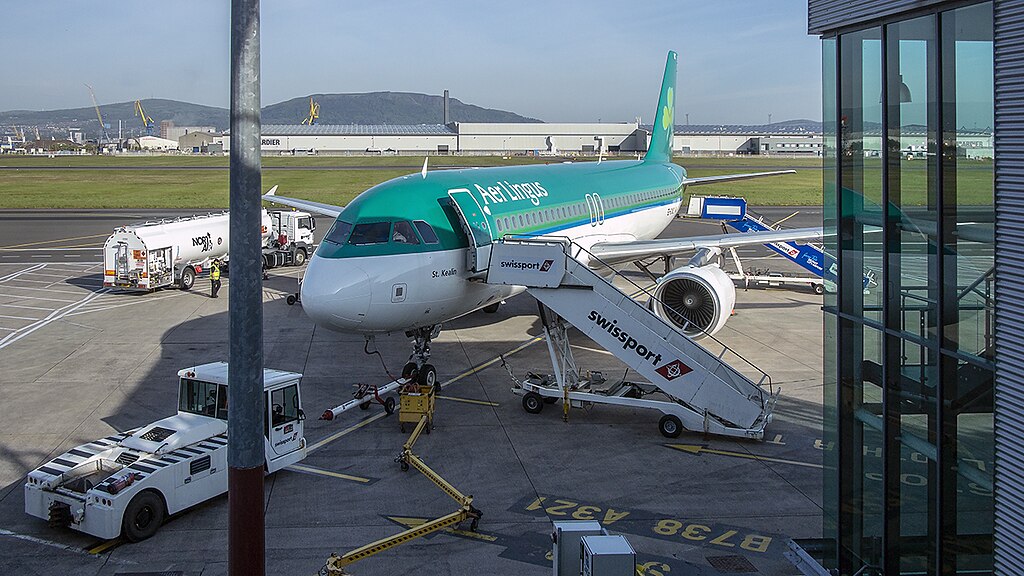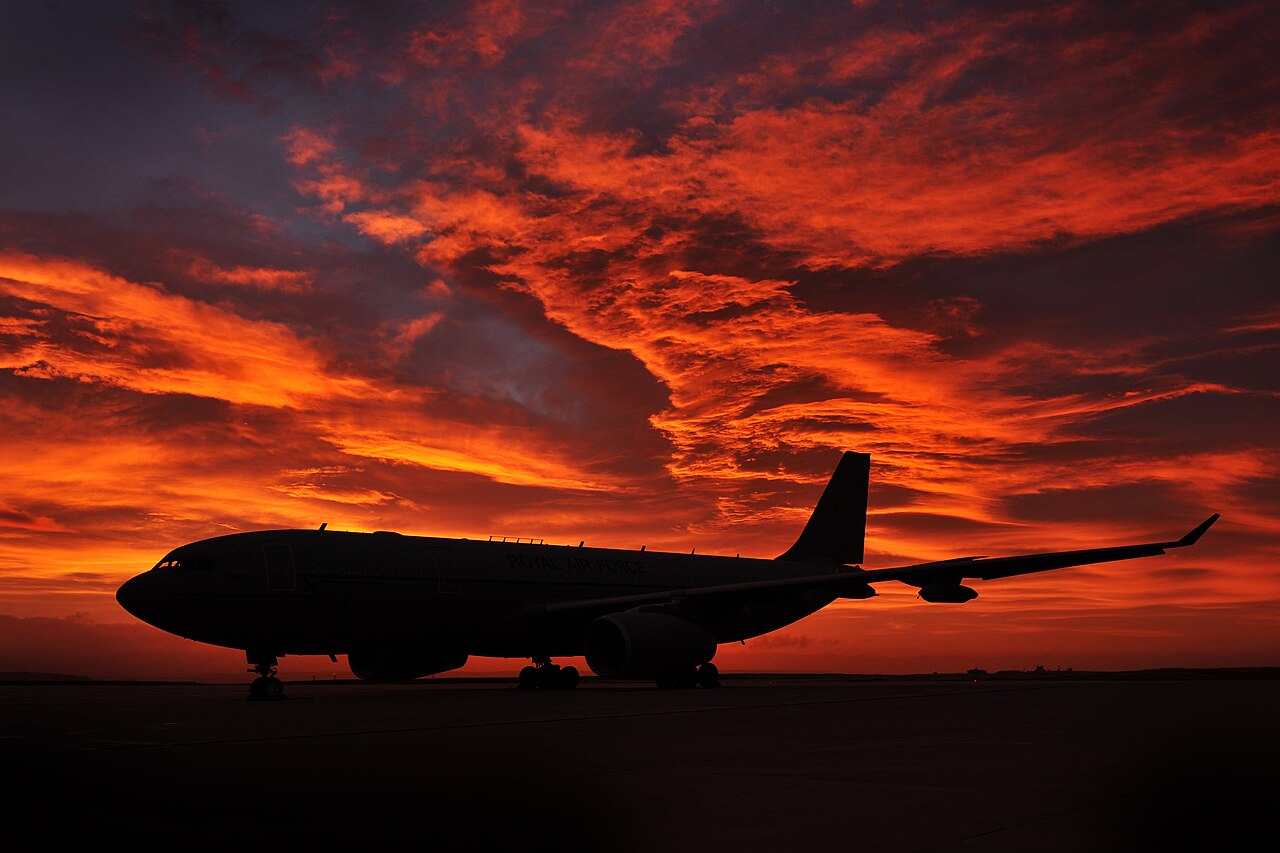
White!! The color of no color. White. The color with which the Buddhist Goddess Tara’s skin is draped, the Color of the Polar Bears, the Taj Mahal, and the color of the clouds. It is with this very color that most airlines choose to paint their aircraft. But why White?
Well, it’s not that all aircraft are painted white. There are notable, glaringly notable exceptions. Easy Jet with the all-out orange hue, there’s the “Toy Story Jet” operated in China (bathing in 24 different colors), the low-cost carrier of South Africa that went all green and diagrammatic, and there are other aircraft with different shades of lighter colors. But why is white the most predominant of the colors in an aircraft?

Photo: Senior Airman Brett Clashman | Wikimedia Commons
There are a lot of reasons behind this- most of which have to do with safety, maintenance, cost-cutting, and saving lives. We’ll take a look at that and more, but let’s first understand why to color an aircraft, to begin with. After all, recoloring an aircraft can cost as much as a million dollars, and wouldn’t we, and airlines in general, be better off saving all that money?
Why paint an aircraft at all?
Painting an aircraft is necessary for a lot of reasons. The first is to save the aircraft from the wear and tear that comes about because of corrosion, moisture, and other dust particles that are constantly bombarding an aircraft when it is on the ground or while it is flying in the air.

photo: Rossographer/Wikimedia commons
If we didn’t paint an aircraft just to save an average of US$200,000, the repercussions of maintaining it and saving it from the wear and tear of things that might damage its exterior could be gigantic.
This is why governing bodies such as the FAA and IACO have their own recommendations about which type of paint to use in specific areas of the aircraft.
Interesting facts about the color “White.”
- Symbol of Purity: White has had connotations of purity and innocence across various cultures and religions.
- Color of Reflection: White light reflects all wavelengths of light, making it the sum of all colors or the color of no color, depending on how you choose to look at it. This property is essential in areas such as photography, where white surfaces are used to bounce light and reduce shadows.
- Architectural Marvel: The Taj Mahal, a mausoleum in India, a symbol of the love of “Shah Jahan,” is daubed in its marvelous white.
- Scientific Illumination: White light is also a part of Sir Isaac Newton’s experiments in spectroscopy, where he, using a prism, demonstrated that “White light” can be broken up into its seven visible constituents.
- Political Symbolism: White was one of the most powerful colors for the suffragettes, who fought for women’s right to vote. This was in stark contrast with the traditional colors associated with masculinity.

- Cultural Fashion: In many Asian traditions, white is the symbol of mourning. This is in stark contrast with Christian weddings, where white is the color (of the cloth) in which a bride is draped.
- Architectural Minimalism: White also finds its way in minimalist paintings of Zen masters who often leave empty white spaces on canvas to show that everything happens in the backdrop of things, not on their own.
- Environmental Adaptation: The white colors of polar bears in the Arctic region allow them to camouflage with the snow there and possibly save them from lurking dangers while retaining body heat.

Photo: Cpl Ashley Keates (RAF) | Wikimedia Commons
How do you paint the aircraft (white)?
Painting an aircraft is a multi-faceted work. There are different layers of paint- ranging from the base level of paint that is applied after all of the foreign particles have been properly shrugged off from an aircraft’s outsides.
And then comes the application of 3 layers of paint– each of which, in unison and in accordance with each other- gives the aircraft its color. These layers are the primer, the base coat, and the top coat.

Before you apply the paint
The aircraft is first taken to the painting hangar, where all the necessary inspections are carried out. This helps to identify the possible as well as the probable hurdles we are likely to acquire while coloring. If the aircraft is to be repainted, one should first sand the old paint to strip it of its previous hue. For this, numerous paint strippers are abrasively rubbed across the surface of the aircraft.
As you paint it!!
After we go through the sanding process, the aircraft is washed with clean cold water. The aircraft is then ready for the primers and other layers to be added to the top. There are several ways of doing this- you can use a spray gun or use the electrostatic way of putting on the paint. One can also opt for acrylic paints.
Top Reasons Why Aircraft are painted white
White keeps the aircraft cool
Anyone who’s worn white garb on a sultry afternoon knows how this color tends to ward off heat more than most colors, more than all colors. The same is true for aircraft as well.

If it were not so, and the aircraft was painted with other eye-catching, heat-absorbing colors, you might as well argue that there would be a cooling system inside an aircraft to keep the heat in check. But that would, in turn, create a high-temperature gradient between an aircraft’s outer and inner surfaces. This will lead to increased metal fatigue.
Say if an aircraft is grounded for months, then it is going to be absorbing a lot of heat. Aircraft are made up of aluminum, fiberglass, and carbon fiber- all of which are likely to be racked with warps or break under the strain of excessive temperature(changes). Even Many sensitive electronics, like the guidance sensors in the nose, have to be protected from heat exposure to keep them running properly.
It minimizes bird strikes
If you’re painting an aircraft any color other than white, chances are the aircraft melts into the background. For example, if you have a green plane flying against a backdrop of hills (which are predominantly covered with green trees), chances are birds flying might not notice the aircraft. As a result, the chances of collision become greater.

A white plane, on the other hand, is in stark contrast against the background- whether it be colored buildings or hills- giving birds the ability to detect it as an object that should be avoidable.
It helps to detect damage easily
Damages to white surfaces can be easily detected. Think about a stain on one of the darker-colored cloth and how that, in comparison to a stain on a white-colored cloth, can be shielded away from the common view. In other words, aberrations in white colors tend to be detected far more easily.
So if the surfaces of the aircraft tend to have dents or creases in its surfaces, the white color will help identify these errors a lot quicker in comparison. And that means that the problems will be fixed sooner as well.

It saves a lot of money
All of the aforementioned qualities add up to one thing: A lot of money is saved. First, the engines are saved from the temperature difference if the outside is not painted white. Secondly, fewer bird strikes mean that engines don’t have to be repaired as much as they would if there were a great number of bird strikes.
If you detect the smaller damages to an aircraft easily due to the application of the white paint, then these small factors don’t add up, and the chances of them culminating in a large disaster are averted.
Further, if aircraft are painted white, the costs that come while selling an aircraft also get minimized. When an airliner decides to sell an aircraft to another airline, the livery needs to be worked over to match the brand of the other airline. If you’ve painted an aircraft white, the job of the new airline becomes that much easier as other colors can be easily daubed

All in all
If you take cultural notations, white might be symbolic of peace. White Doves are also taken as emblems of benevolence. But this is not why aircraft are painted white. There’s a basic amount of science that goes into it and a whole lot of money-saving techniques. Yes, not all aircraft are painted white, but a majority are. And we hope you had a sense of why!!
